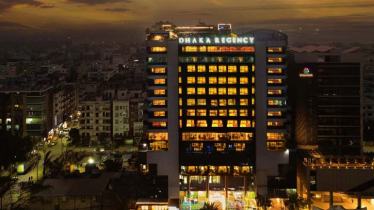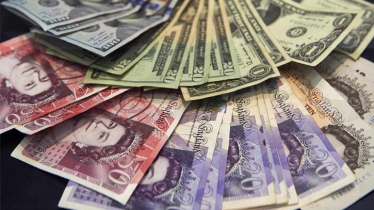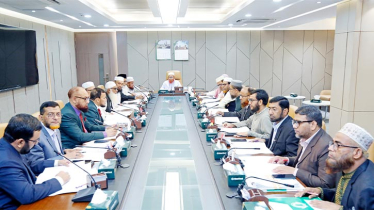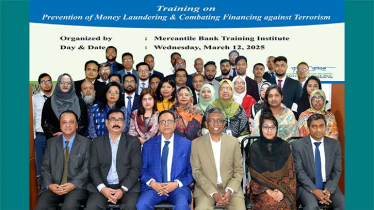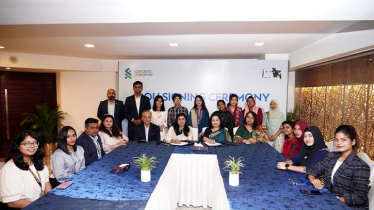
Honey farmers collect from bee boxes weekly, gathering 2-3 kg of honey from each box. Photo : Tomal Das
The country has tasted a sweet surge in honey cultivation with a soaring demand in and outside the country in recent years.
Over the past five years, honey production has witnessed an astounding increase of almost 600 percent. This staggering growth trend suggests an estimated production of approximately 15,000 metric tonnes of honey in the ongoing season.
Analysts think this surge has catalyzed a significant revolution in the realm of honey farming, striving to meet the escalating demand.
Despite minimal support previously extended to honey farmers by the government, there has been a notable shift in approach. Beginning from the fiscal year 2022-2023, the government's agriculture department has shifted gears, placing a special emphasis on the cultivation of honey.
As per the Department of Agriculture Extension (DAE), the current season's honey cultivation has significantly surpassed the historical production of mustard in the country. Mustard flower honey has emerged as a particularly sought-after variant within the nation, commanding higher demand compared to other floral varieties. Moreover, there exists a robust export demand specifically for mustard flower honey, prompting a heightened emphasis on honey cultivation.
According to data from the Bangladesh Small and Cottage Industries Corporation (BSCIC), the country witnessed substantial growth in honey production during the fiscal year 2022-23, surpassing 12,000 metric tonnes. This represents a substantial surge compared to preceding years, notably exceeding the production figures of 10,655 MT in FY 2021-22, 4,622 MT in
FY 2020-21, 2,766 MT in FY 2019-20, and 1,805 MT in FY 2018-19.
As per information from the Department of Agriculture Extension (DAE), the Rabi season of 2022-2023 witnessed honey cultivation on a vast expanse of land, totaling 300,236 hectares.
In the subsequent season of 2023-24, the cultivation of mustard alone covered an extensive 800,123 hectares. Additionally, honey collection extends to various other crops such as sunflower, black cumin, onion, coriander, mango, and litchi. The comprehensive cultivation plan aims at utilizing a total of 1,100,994 hectares of land, with 300,236 hectares specifically allocated for honey cultivation.
The government recognizes approximately 2,500 commercial or professional honey farms operating across the country. Moreover, an additional 25,000 farmers are engaged either professionally or as part-time practitioners in honey rearing activities. These endeavors encompass a staggering count of more than 130,000 honey boxes. Notably, last year's honey production amounted to 12,000 metric tonnes. However, with the ongoing extraction of honey from mustard fields, stakeholders are anticipating a notable increase, aiming to achieve a production target of 15,000 metric tonnes this year.
Apart from providing training in bee cultivation, BSCIC is helping the farmers in marketing the produced honey. 500 metric tonnes of honey produced in Bangladesh is being exported to Japan, India and various countries in the Middle East. Farmers are now turning to commercial honey cultivation for export. They said, there is an opportunity to extract 100,000 metric tonnes of honey from honey farms in the country. BSCIC is working towards that goal. BSCIC is also working jointly with the Ministry of Agriculture to increase honey production, train beekeepers and develop everything.
According to reports, the Bangladesh Small and Cottage Industries Corporation (BSCIC) has successfully trained over 25,000 bee farmers in modern beekeeping techniques for commercial purposes. To further expand this program, BSCIC is planning to establish a permanent beekeeping training institute. Continuous training sessions for new beekeepers are also underway. Moreover, the government is actively involved in promoting honey production by establishing specialized farms in 12 districts ideal for beekeeping.
Badal Chandra Biswas, the Director-General of the Department of Agriculture Extension (DAE), emphasized the increased scope of honey cultivation throughout the nation. The focus has shifted toward fostering honey cultivation, with the Agriculture Department actively engaged in training honey farmers. Efforts have been made to equip farmers with higher-quality beekeeping boxes to enhance cultivation standards. Furthermore, private sector involvement in honey cultivation is being encouraged.
The DAE Director-General highlighted the promising potential of the honey sector, emphasizing its capacity to generate significant foreign exchange. Proper collection, processing, and storage of honey are seen as crucial for maximizing the sector's potential. Consequently, the Ministry of Industry has been urged to focus on bottling and packaging honey effectively to ensure its quality and attractiveness in the market.
According to data, the top country in honey production is China. Within Asia, Vietnam and India have significant places in honey exports. Apart from supplying honey to the domestic market, Bangladesh is now exporting honey to countries like India, Thailand, Arab Emirates etc. Currently, Bangladesh ranks 83rd in honey exports and 66th in imports.
The honey farmers said that till now the agriculture department of the government did not give much importance to the issue of honey cultivation from mustard, but they have cooperated in various ways in the current season. Honey farmers claim that it can be a big and promising industry.
They said that it is possible to earn a large amount of foreign exchange by exporting honey if we get the technical and financial support of the government from production of honey to packaging and marketing. At the same time unemployment will also be removed by declaring honey farming as an industry and giving all kinds of support.
Dr. Abdus Sattar Mandal, Former VC of Bangladesh Agricultural University, told The Daily Messenger that only 10 percent of the land in Bangladesh where mustard, litchi, mango, sesame etc. is cultivated. So, it can be said that Bangladesh has immense potential in honey farming. If it is possible to bring 100 percent of the land under bee cultivation, then as the crop production will increase, the production of honey will also increase accordingly.
He also said that commercial bee farming can create huge employment opportunities in our country. If the honey farms become widespread in the country through the trained population, the production of quality food will increase in the country, it will bring positive results in ensuring the nutritional needs and at the same time it will be possible to earn foreign exchange by exporting the by-products.
Meanwhile, Manikganj district is one of the areas where honey is cultivated in the country. In this district, more than four hundred bee growers cultivated honey through 12,500 bee boxes. The target of extracting honey from here is about 180 metric tonnes, the market value of which is about Tk 10 crore.
Mustard has been cultivated in all seven upazilas of Manikganj. However, mustard cultivation has been highest in Shivaloy, Ghior, Harirampur, Singair and Sadar upazilas. Bee growers from Satkhira, Khulna, Narayanganj, Gopalganj, Faridpur and Ishwardi areas are collecting honey from mustard flowers with bees all over the district.
In the current season, mustard has been cultivated in 71,500 hectares of land in different areas of the district. More than four hundred honey farmers are busy collecting honey by placing 12,500 boxes next to these mustard fields. Compared to last year, production of currency will be more this year.
Lal Mia, a beekeeper of Baniajuri area of Ghior upazila, said that the amount of honey collected depends on the weather. Honey can be collected from these boxes once or twice per week if the weather is favorable. Each box can produce 5 to 6 kg of honey per week. And if there is foggy weather, you have to collect honey from the box every 10 to 12 days.
Selim Reza Bablu, a honey collector in Muljan area of Manikganj Sadar Upazila, said that every year he brought bee boxes to Manikganj to collect honey from Kushulia village of Satkhira's Kaliganj Upazila. Now he can extract 2,500 to 3,000 kg of honey from 150 bee boxes, the market value of which is Tk 10 to 11 lakh.
Abu Md Enayet Ullah, Deputy Director of Manikganj Agricultural Extension Department, said that bees increase the production of forest, fruit and agricultural crops by pollinating flowers. Pollination occurs when the pollen of one flower falls into the stigma of another flower. As a result of which the crop production increases by about 10 to 15 percent. By doing this, beekeepers are benefiting as well as farmers are benefiting in crop production.
(Manikganj Correspondent Md Sami has contributed to this report)
Messenger/Disha



